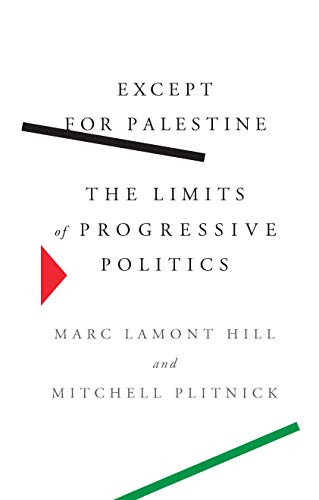The Real Terror Network: Terrorism in Fact and Propaganda, Edward S. Herman, South End Press, 1982, pp. 252, ISBN 0-89608-134-6
One reason enough to read Herman’s The Real Terror Network is that it features at the top of the Chomsky Reading List, a compilation of books and authors most often cited and referenced in Noam Chomsky’s works. Indeed, the two have collaborated on the perhaps most widely known work Manufacturing Consent, in which they develop the well-known propaganda model of biases in commercial mass media. Likewise, their two-volume Political Economy of Human Rights scrutinizes US foreign policy in South East Asia and Latin America and its support for third world fascist dictatorships. The latter itself an expanded version of another joint work titled Counter-Revolutionary Violence, in which they developed the typology of US foreign policy which was to accompany all of their subsequent work.
According to Chomsky and Herman, US foreign policy orients itself towards bloodbaths and terror campaigns depending on their utility for advancing the goals and interests of the US. Therefore, one can encounter benign bloodbaths that pass unnoticed in the US due to their being committed by friendly regimes and constructive bloodbaths, which find their justification in the defence of US corporate interests, as was the case in Guatemala. In turn, the bloodbaths that receive widespread attention and condemnation are reserved for those atrocities committed by the enemies of the US. Generally, their joint work sought to expose the hypocrisy of US foreign policy and reveal the structures of power and domination that were parroted in the mass media.
While Chomsky is regarded as the foremost public intellectual, Herman generally receives less praise. Partly due to his vociferous criticism of most things held sacred. For example, his The Politics of Genocide and Enduring Lies, which he attempts to methodically counter the narrative which sought to portray the massacres in Rwanda and Kosovo as genocides, received widespread condemnation. Keeping with Rwanda, Herman held that it was, in fact, the perpetrator that was the victim. His thesis held that in order to assign blame on the Hutus, one had to ignore the widespread and systematic violence perpetrated by the Rwandan Patriotic Front (RPF) against the Hutus before the April-July 1994 period and its support from Uganda and the US. All of this was part of a campaign to reverse the socio-economic progress that began with the revolution of 1959 and the popularity of President Habyarimana and served the interests of the US. Accordingly, the spark that lit the fire – the shooting down of the President’s plane – was but a final assault of the RPF army on the government with the intent to overthrow it. There is also an excursus on the political history of Paul Kagame, who spent time at the US army base in Forth Leavenworth, that parallels the Latin American fascists who had their training at the School of the Americas, likewise well documented in his other works.
Herman’s crusades against the US, and the unsavoury taste that his work left in the reader’s mouth perhaps serve as the best vindication of the credo he adhered to, often cited by Chomsky, that “a man that should call everything by its right name would hardly pass the streets without being knocked down as a common enemy.” Despite his furor, he will be remembered as the sweetest media critic.
In that sense, The Real Terror Network is a distillation of Herman’s prior work and lifelong commitment to upholding human rights universally. The book is structured as a critique of best-selling books by prominent experts on terrorism, Claire Sterling, Walter Laqeur, and Jeane Kirkpatrick. He reveals, and through systematic examination, ridicules their “if-I-don’t-like-it-call-it-terrorism” approach to expose their intentional omission of fact, lack of contextualization, and outright deception. In practice, this means that the “experts’” definition of terrorism is carefully crafted to exclude all terrorists of the right, retail as well as wholesale and legitimize the national security state (NSS). Their work exaggerates the influence of Moscow on resistance movements and serves to frame their actions in the Cold War era framework of communist menace, thereby legitimizing their dictatorial opponents.
The NSS acts to serve the interests of a tiny local elite and vast transnational corporate interests and in so doing harms the local population. In Paraguay, Ecuador, Brazil and other Latin American states, this has resulted in millions of peasants being forced off their lands and, as Amnesty International noted, systematic use of torture that saw men and women brutalized. This happens in the form of retail and wholesale terrorism. Retail terrorism reflects tightly organized death squads, or individual murderers in the case of Luis Posada Carilles, that act outside of state jurisdiction but enjoy the state’s support. Cuban refugee terrorist network, organized and equipped by the US following the Cuban Revolution, is but another example of retail terrorists. Wholesale terrorism represents outright organized state terror, as was the case in the ’70s, when Argentina, Bolivia, Brazil, Chile, Paraguay and Uruguay established a system of joint monitoring and assassination of dissidents in each other’s states. After proceeding to outline some gruesome details of their actions, Herman juxtaposes that with the Western expert opinion that merely sought to justify the actions as necessary and to further whitewash the actions of the US government that contributed to them.
Another important role in mobilizing public opinion in favour of elite interests that reflect US foreign policy strategies is played by mass media. In a chapter that is really a summary of Manufacturing Consent, Herman outlines the in-built, systemic filter systems that ensure that this outcome. Highlighting how propaganda is spewed by deferring to and uncritically relaying State pronouncements and thereby exaggerating the communist threat, Herman shows how this system survives.
The goal of all of Herman’s work is to mobilize the public to act as a check on unrestrained power of the government and prevent further atrocities from being committed in their name. He upheld universal human rights, and his works disarm those who seek to violate them. In that sense, Herman has shown everyone that the emperor, actually, has no clothes.




